As shown in figure, a metal rod completes the circuit. The circuit area is perpendicular to a magnetic field with B=0.15T. If the resistance of the total circuit is 3Ω, how large a force is needed to move the rod as indicated with a constant speed of 2 m/s?
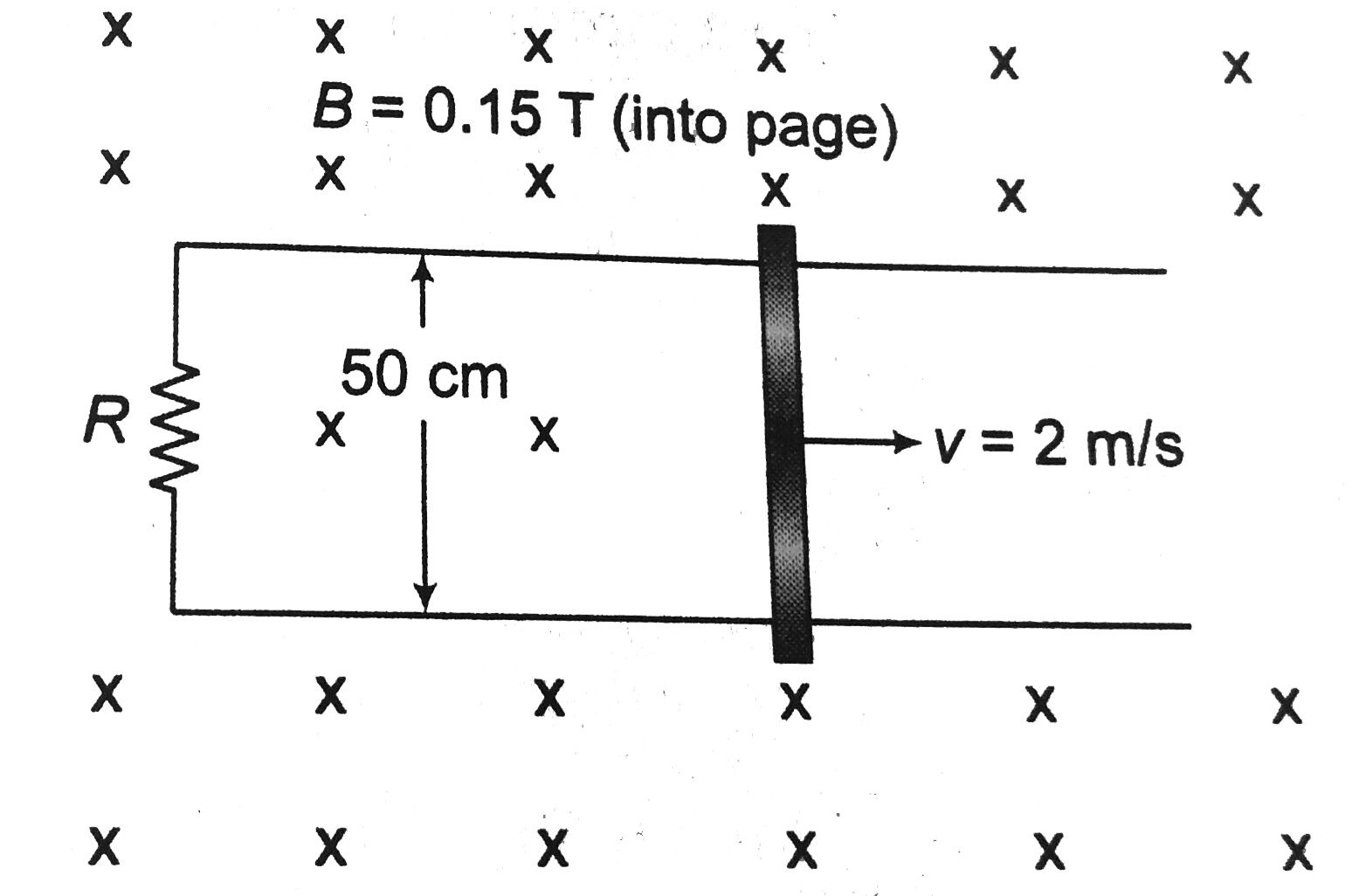
3.75×10−3N
2.75×10−3N
6.57×10−4N
4.36×10−4N
The correct Answer is:A
Given, B = 0.15 T, l = 50×10−2 cm and v = 2 ms−2
∴ emf , e = Bvl
e=0.15×2×50×10−2=0.15
Current, i=eR=0.153=5×10−2
Force, F = Bil = 0.15×5×10−2×50×10−2
=3.75×10−3N
Topper's Solved these Questions
- BOOK - DC PANDEY ENGLISHCHAPTER - ELECTROMAGNETIC INDUCTIONEXERCISE - Match the columns5videos
ELECTROMAGNETIC INDUCTION
- BOOK - DC PANDEY ENGLISHCHAPTER - CURRENT ELECTRICITYEXERCISE - Medical entrances gallery97videos
CURRENT ELECTRICITY
- BOOK - DC PANDEY ENGLISHCHAPTER - ELECTROMAGNETIC WAVESEXERCISE - Sec C22videos
ELECTROMAGNETIC WAVES
Similar Questions
As shown in the figure a metal rod makes contact and complete the circuit. The circuite is perpendicular to the magnetic field with B=0.15tesla. If the resistance is 3Ω force needed to move the rod as indicated with a constant speed of 2m/sec is
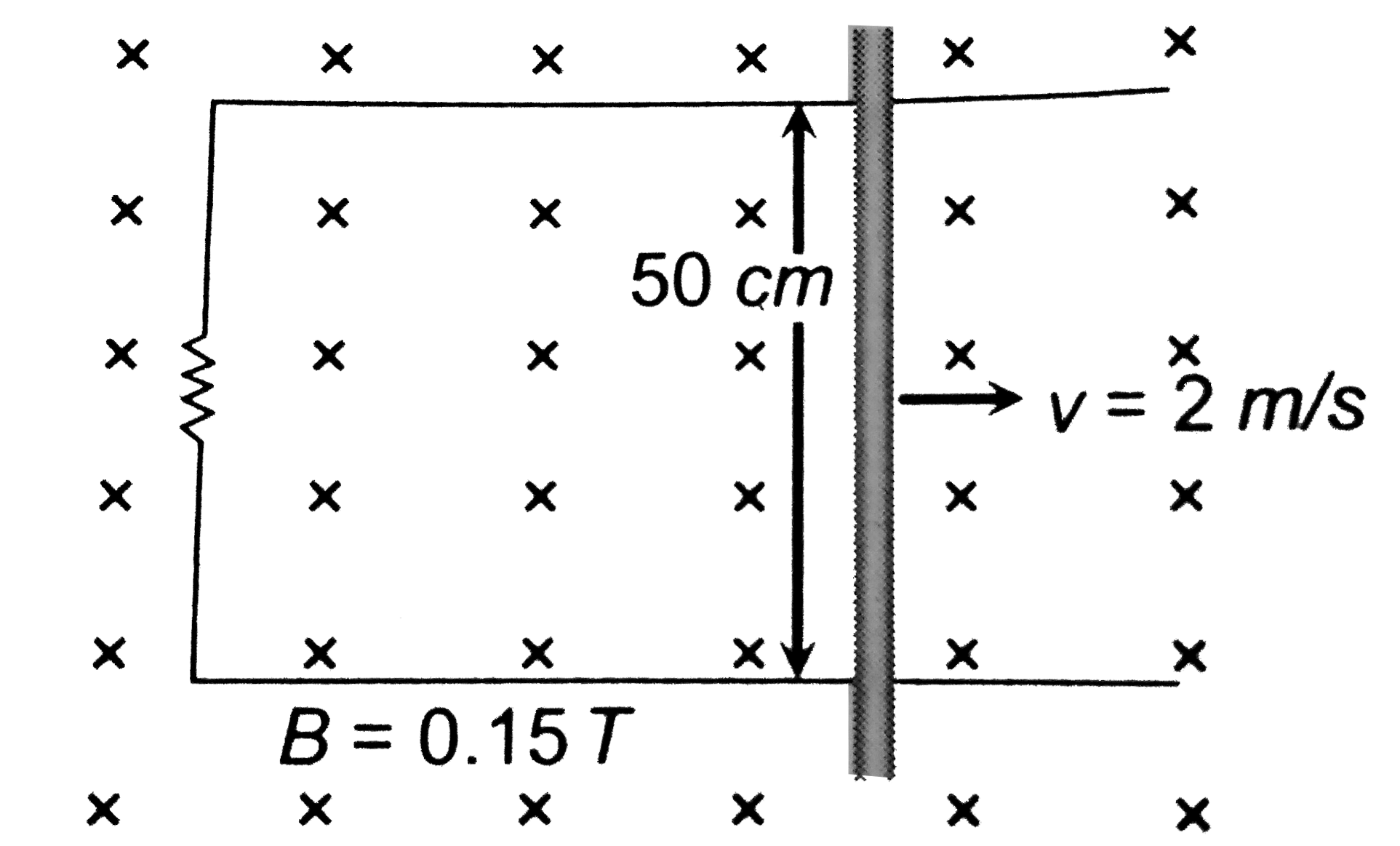 View Solution
View SolutionThe figure shows a metal rod (PQ), which makes contact and complete the circuit. The circuit is perpendicular to the magnetic field withB=1T. If the resistance is 2Ω , then force required to move the rod and indicated with a constant speed of 2msis
 View Solution
View SolutionA 0.5m long metal rod PQ completes the circuit as shown in the figure. The area of the circuit is perpendicular to the magnetic field of flux density 0.15T. If the resistance of the total circuit is 3Ω calculate the force needed to move the rod in the direction as indicated with a constant speed of 2ms−1
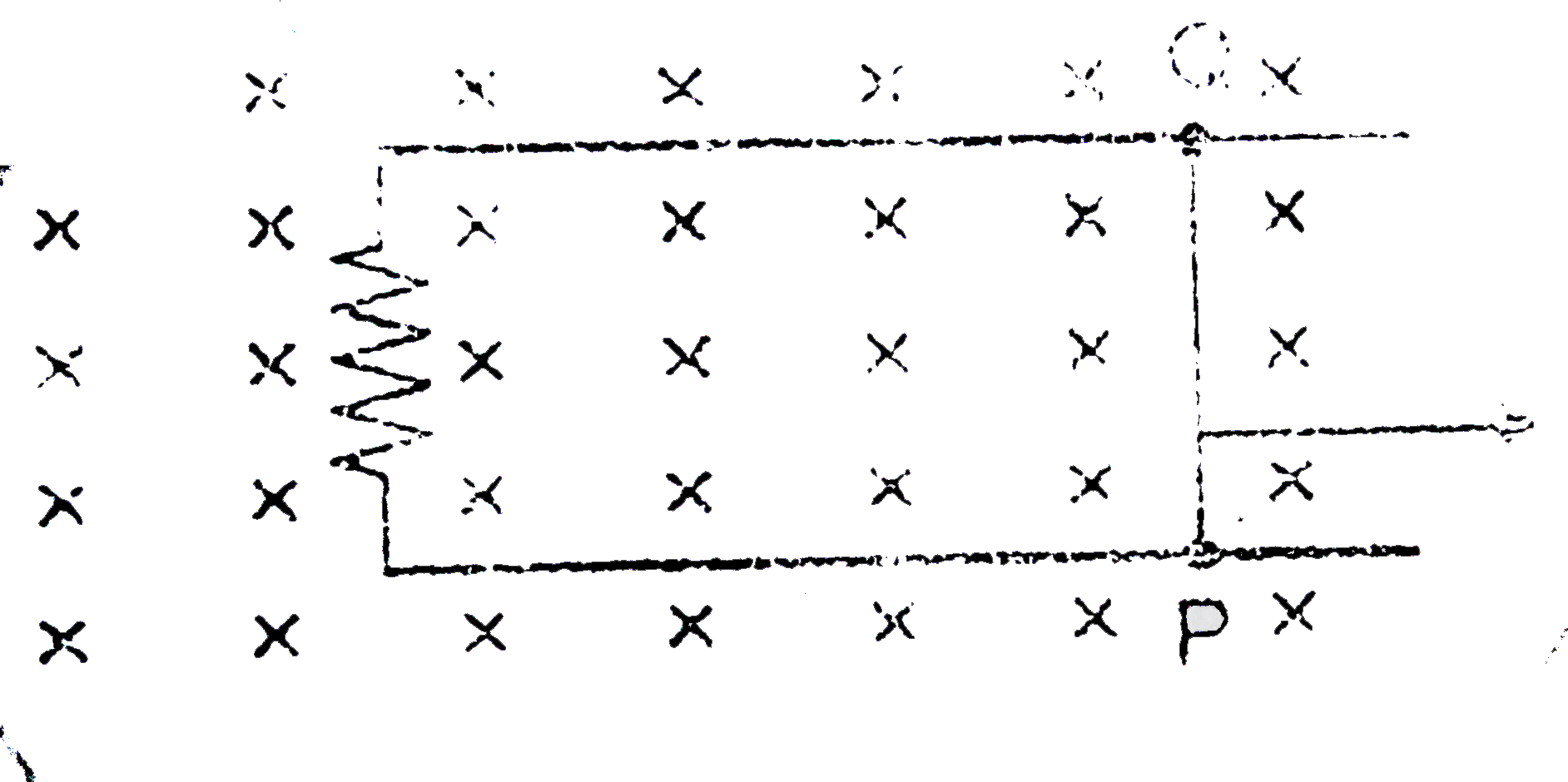 View Solution
View SolutionA metallic rod completes its circuit as shown in the figure. The circuit is normal to a magnetic field of B=0.15 tesla. If the resistances of the rod is 3Ω the force required to move the rod with a constant velocity of 2m/sec is-
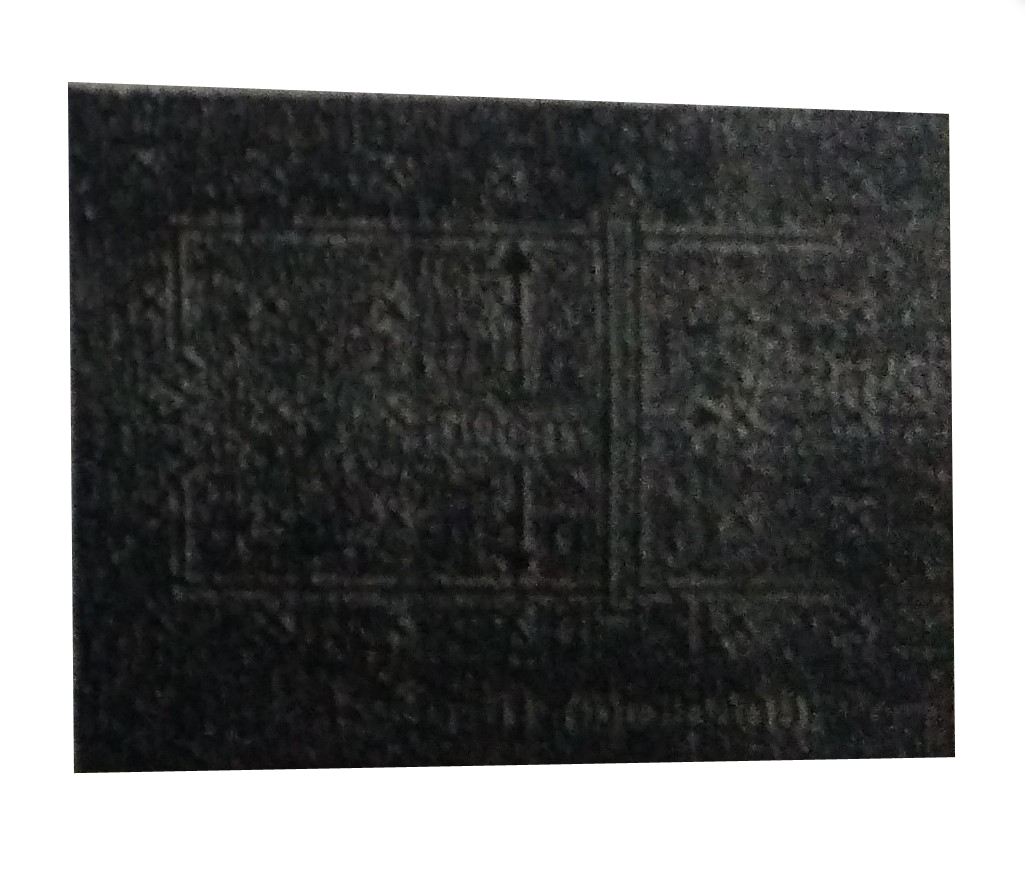
A. 3.75×10−3N
B. 3.75×10−2N
C. 3.75×102N
D. 3.75×10−4NView SolutionA metal rod of length l cuts across a uniform magnetic field B with a velocity v. If the resistance of the circuit of which the rod forms a part is r, then the force required to move the rod is
View SolutionThe conducting rod ab shown in figure makes contact with metal rails ca and db. The apparatus is in a uniform magnetic field 0.800T, perpendicular to the plane of the figure.
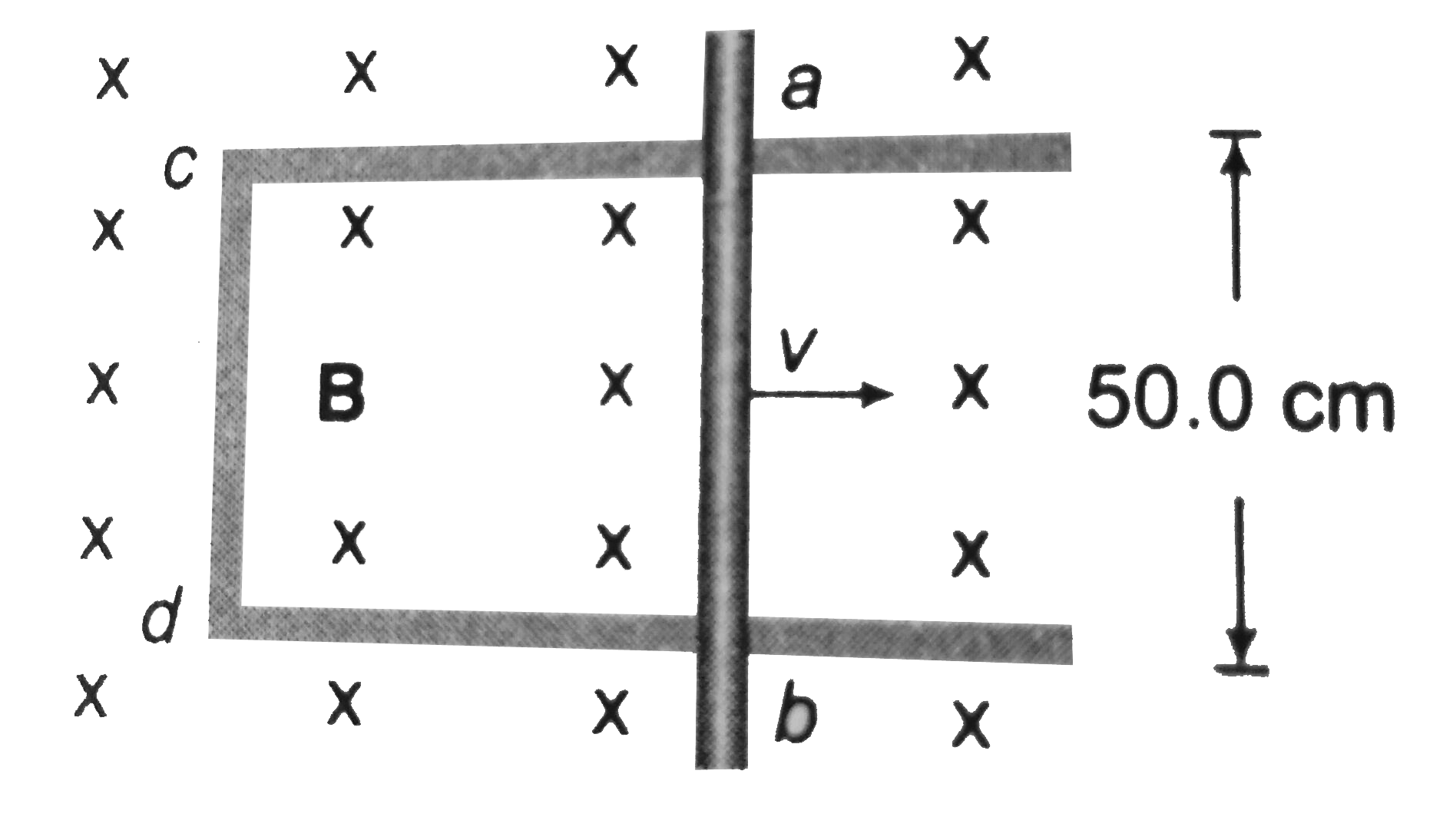
(a) Find the magnitude of the emf induced in the rod when it is moving toward the right with a speed 7.50m/s.
(b) In what direction does the current flow in the rod?
(c) If the resistance of the circuit abdc is 1.50Ω (assumed to be constant), find the force (magnitude and direction) required to keep the rod moving to the right with a constant speed of 7.50m/s. You can ignore friction.
(d) Compare the rate at which mechanical work is done by the force (Fu) with the rate at which thermal energy is developed in the circuit (I2R).View SolutionA wire of length 1m is moving at a speed of 2ms−1 perpendicular to its length and a homogeneous magnetic field of 0.5T. The ends of the wire are joined to a circuit of resistance 6Ω. The rate at which work is being done to keep the wire moving at constant speed is
View SolutionFigure shows the to views of a rod that can slide without friction. The resistor is 6.0Ω and a 2.5T magnetic field is directed perpendicularly downward into the paper. Let l=1.20m.
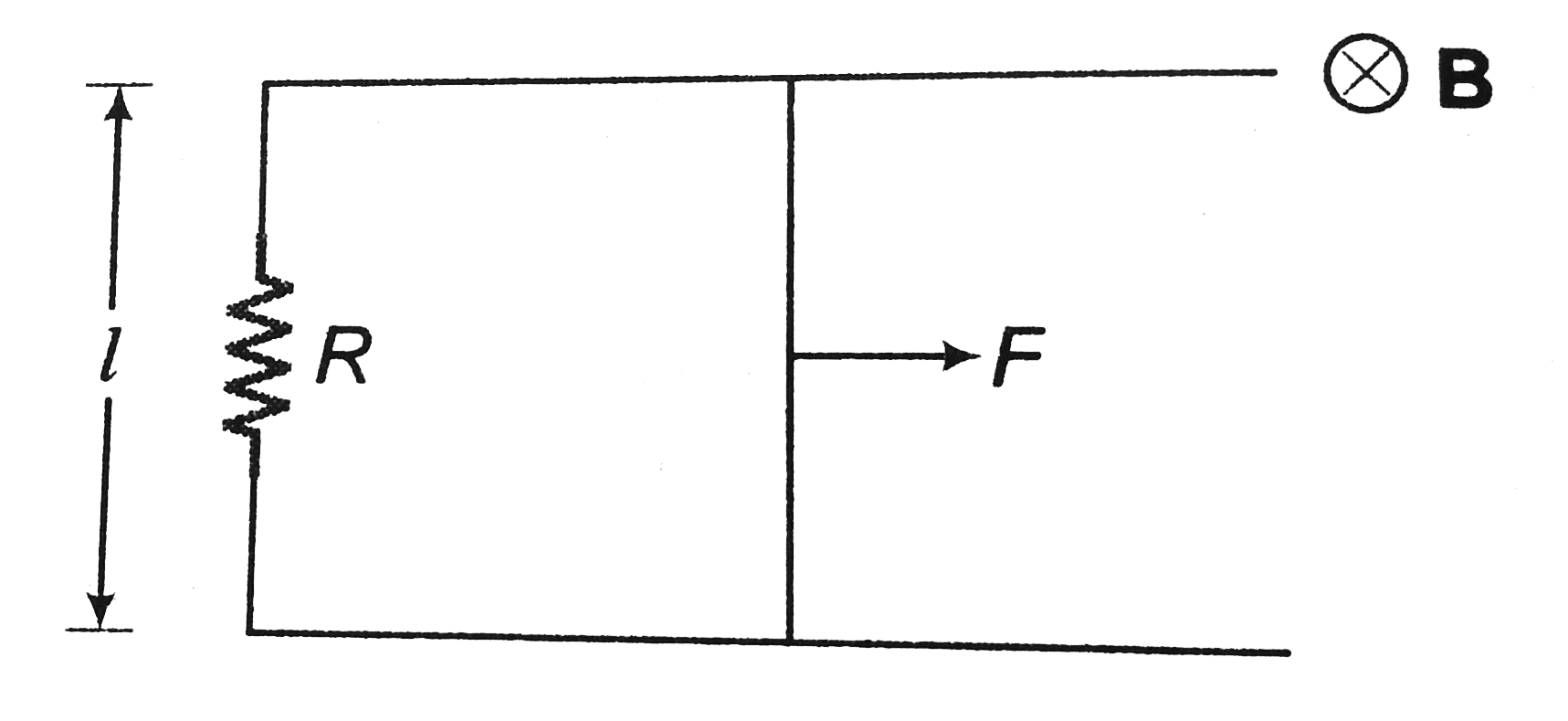
a. Calculate the force F required to move the rod to the right at a constant speed of 2.0ms,
b. At what rate is energy deliered to the resistor?
c. Show that this rate is equal to the rate of work done by the applied force.View SolutionFigure shows the to views of a rod that can slide without friction. The resistor is 6.0Ω and a 2.5T magnetic field is directed perpendicularly downward into the paper. Let l=1.20m.

a. Calculate the force F required to move the rod to the right at a constant speed of 2.0ms,
b. At what rate is energy deliered to the resistor?
c. Show that this rate is equal to the rate of work done by the applied force.View SolutionThere is a pair of fixed, parallel rails of negligible resistance in a horizontal plane, at a distance of L = 10 cm. The rails are connected, at one of their ends to an ideal battery of EMF 0.5 V, as shown in the figure. The system is placed in a vertically downward and perpendicular magnetic field of magnetic induction B = 1T. A metal rod of resistance R=10Ω is placed perpendicularly on the rails. The rod placed perpendicularly on the rails. The rod and rails are frictionless. The magnitude of force, which is to be exerted on the rod in order to move it with a constant speed of order to move it with a constant speed of 1ms−1 in the direction shown, is
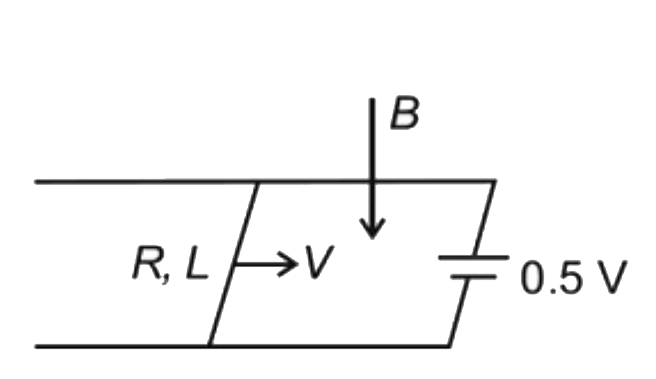 View Solution
View Solution

